December31
Over this past year, I’ve managed to read 121 books. You can see the complete list, by genre & in ranked order here. To see an alphabetical listing by author’s last name, go here.
I ranked most of those 121 books 3 or 4 stars. There were some, though, that I thought merited top ratings. Here’s my list of picks for the year.
Best Book I read in 2011, hands-down: A Fine Balance by Rohinton Mistry. It rates five plus, plus, plus stars and will become one of my lifetime bests. 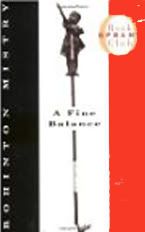
Set in 1975 India during “The Emergency” when the Prime Minister, Indira Gandhi, “ruled by decree”, A Fine Balance tells the stories of four people who, because of circumstances, end up living together in a small flat. It’s a sweeping and powerful novel that has been compared to works of Tolstoy or Dickens. A rich study of a difficult time in India’s history, it features complex and flawed characters. I cannot recommend it highly enough.
The next fifteen best non-mystery novels I read in 2011:
1. Barney’s Version by Mordecai Richler
by Mordecai Richler
Driven to write his own memoirs by his sworn enemy’s public statement that he is a wife abuser, an intellectual fraud and probably a murderer, Barney Panofsky tells an absurd but at least partially believable story. Set in Paris, Montreal and the Haliburtons, it’s an unforgettable love story, a story about family and the riches of friendship. I loved the uncertainty that Richler was able to maintain throughout the book – did Barney kill Boogie, or did he not? Is Barney’s memory failing? Is he in denial? The ending, that I should have seen coming, caught me completely off guard and settled matters once and for all. I recommend this for people who: love literary fiction, enjoy family sagas, like Canadian references and settings, or those who appreciate a potent ending to a story.
2. Altamont Augie by Richard Barager
This novel is a riveting story of the 1960s youth culture and the politics of the Vietnam War from that point of view. It’s provided much fuel for discussion in our household and food for thought. It’s been a while since I’ve read such a thought-provoking book, one that stays with me as Augie has. Read this if: you were there, man, and want to know more about both sides of the ideological battle of that decade, or if you missed the 1960s and want a captivating introduction.
3. 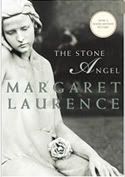 The Stone Angel by Margaret Laurence
The Stone Angel by Margaret Laurence
A tour de force of Canadian literature, this book is the story of 90-year-old Hagar Shipley, told in flashbacks as she struggles with her declining abilities. Laurence writes in an authentic voice, with brevity of words but deep insight. The Stone Angel should be read by anyone who has an aging friend or relative.
4. A Dog’s Purpose by W. Bruce Cameron
Not great literature, but a wonderful read, A Dog’s Purpose is told from the point of view of the titular dog throughout his four lives. Cameron keeps the concept of a canine narrator from becoming overly cutesy and maintains a roller coaster ride of emotions for the reader. I recommend it for all readers, of all ages, who have ever loved a dog.
5. The Book Thief by Markus Zusak
by Markus Zusak
Set in WWII Germany, this is the story of a young girl and her best friend, the boy down the street. In a twist that makes it stand out from other books in this genre, the story is narrated by Death. If you love to own books, you’ll appreciate this YA novel.
6. Oscar & Lucinda by Peter Carey
by Peter Carey
Set in Australia in the late 19th century, this is the story of two social misfits who form a friendship despite the taboos of the day. Set in both the city and the wilderness, it is a brilliant depiction of Australia as the 1800s draw to a close, and the country struggles to reconcile their English sensibilities to the reality of life in a raw new place. Made into a movie (with a completely different ending) starring Cate Blanchett and Ralph Fiennes. Read this if you love literary fiction, want to learn about 19th century southern Australia, or don’t need happy endings.
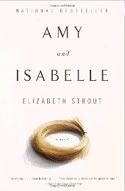 7. Amy and Isabelle
7. Amy and Isabelle by Elizabeth Strout
by Elizabeth Strout
In the very hot New England summer of 1969, mother and daughter learn about life, love, and each other. This is literary fiction that verges on women’s fiction but doesn’t quite fall into that category. Read it if you enjoy a coming of age story with an edge.
8. February by Lisa Moore
by Lisa Moore
On February 15, 1982 the oil rig The Ocean Ranger sank in Canadian waters off Newfoundland, with all hands lost. February is the fictional account of one woman whose husband died in the disaster. Moore has brilliantly captured the physical and emotional cold of that winter. Read this if you: appreciate learning about the human toll behind the headlines.
9. People of the Book by Geraldine Brooks
by Geraldine Brooks
“The book” is a five-hundred-year-old copy of a Jewish Haggadah, a text used at Passover meals. This real-life treasure came to light in Sarajevo in the 1990s and Brooks has imagined a rich history for it in this novel. Fans of historical fiction will eat this up, but it’s also a treat for all lovers of books.
10. Room by Emma Donaghue
This is the story of five-year-old Jack and his mother and their life as prisoners in an 11×11 foot storage locker (the titular Room). Eventually, they devise a plan for escape and make it out into the world. This is a book about the indomitability of the human spirit, the capacity to adapt, and the power of love. Recommended for parents, but also for those interested in the effects of social deprivation.
11. Wrecker by Summer Wood
In 1969 San Francisco, young single mother Lisa Fay finds herself swept into a drug deal and looking at 15 years in jail before parole. Her young son, Wrecker—named for his destructive tendencies—is sent to live with Lisa Fay’s sister, Meg, and her husband Len in Humboldt County, California, although Lisa Fay is not aware of his fate. Wrecker is never cliché in its setting or its emotions. As much as it is a story of being foster or adoptive parents, it is not one-sided. I felt as empathetic toward Lisa Fay as I did toward Melody. There are beautiful insights and rich emotion, caught in spare and lovely prose. Recommended for anyone with children, and those interested in the dynamics of families of all kinds.
12. Postcards by E. Annie Proulx
by E. Annie Proulx
Publisher’s description: “Winner of the 1993 Pen/Faulkner Award for Fiction, Postcards tells the mesmerizing tale of Loyal Blood, who misspends a lifetime running from a crime so terrible that it renders him forever incapable of touching a woman. Blood’s odyssey begins in 1944 and takes him across the country from his hardscrabble Vermont hill farm [to present day California] (…)In his absence, disaster befalls his family; greatest among their terrible losses are the hard-won values of endurance and pride that were the legacy of farm people rooted in generations of intimacy with soil, weather, plants, and seasons. Postcards chronicles the lives of the rural and the dispossessed and charts their territory with (…) historical verisimilitude and writerly prowess. (…) It is a new American classic”. Recommended for those interested in post WWII America, readers of literary fiction, and people who don’t need neat and happy endings.
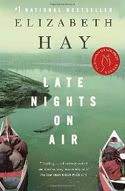 13. Late Nights on Air
13. Late Nights on Air by Elizabeth Hay
by Elizabeth Hay
This novel, set in 1975 and 1976 Yellowknife (capital of North-West Territories, Canada), is the story of a group of people who operate the radio station there, and their canoe trip into the wilds of The Barrens, following the route of doomed explorer John Hornby. Read it if you’re interested in the Canadian North, the CBC or enjoy literary fiction.
14. The Stone Diaries by Carol Shields
by Carol Shields
Classic CanLit, the Stone Diaries garnered the author the Governor General’s Award, the National Book Critics Circle Award, and the Pulitzer Prize. Described as a family album set to a novel, it’s the account of 90-something Daisy Goodwill’s life from birth to death… Jeffrey Canton says: “Shields includes a variety of other documents and perspectives–letters that Daisy received over the years, a list of her bridal trousseau, an occasional reminiscence by a son, daughter, or family friend, an objective third-person description of a house, and a wonderful collection of photos that supposedly come from the Goodwill family–which give us the sense that this is more than just fiction. Here we have a rare glimpse into the nooks and crannies of an ordinary life as we watch Daisy cope with love, marriage, children, gardening, old age, and death.” It’s rich and real and I recommend it for lovers of literary fiction, and those who enjoy a book that covers the passage of decades.
15. The Book of Lies by Mary Horlock
by Mary Horlock
This novel is set on Guernsey in the Channel Islands in 1985 and, in memories and flashback, during the German occupation of the Islands during WWII. It’s told from the point of view of a teenaged girl who is hiding her involvement with the death of a school mate. The Book of Lies is a well-told story with lots of new-to-me information. If you’re interested in Guernsey, or how WWII affected ordinary people, especially those in Occupied countries, this is the book for you.
The five best mysteries I read in 2011:
1. Five Little Pigs : Hercule Poirot mystery #24 by Agatha Christie
: Hercule Poirot mystery #24 by Agatha Christie
Considered to be among the very best from the grande dame’s pen, this Hercule Poirot mystery focuses on five suspects in a 16-year-old murder. Told in Poirot’s conversation with each, and then an accounting by each in a follow-up letter, at first it seemed repetitive. Then I began to notice small inconsistencies between the stories. This is one of the only Christies that I have solved partway through the book, but rather than being disappointed that it was easy (it wasn’t, )I was fascinated to watch the author misdirecting readers. Very satisfying, and worthy of its reputation
2. A Murder is Announced : Miss Marple mystery #4 by Agatha Christie
: Miss Marple mystery #4 by Agatha Christie
This features Miss Marple and is considered to be one of the best books written by this author. It’s a great mystery with classic misdirection, and a wonderful period piece.
3. Thereby Hangs a Tail: Chet & Bernie mystery #2 by Spencer Quinn
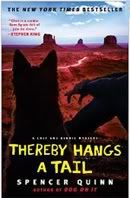 This is the second book in the delightful Chet & Bernie series. Chet is the canine half of the PI team and the story is told through his eyes. This mystery revolves around a missing show dog named Princess and her owner, who we learn early on, has been murdered. But Chet can’t convey that to Bernie and so Bernie must discover it for himself. Chet’s advanced doggie senses of hearing and smell bring interesting angles to the story.
This is the second book in the delightful Chet & Bernie series. Chet is the canine half of the PI team and the story is told through his eyes. This mystery revolves around a missing show dog named Princess and her owner, who we learn early on, has been murdered. But Chet can’t convey that to Bernie and so Bernie must discover it for himself. Chet’s advanced doggie senses of hearing and smell bring interesting angles to the story.
4. To Fetch a Thief : Chet & Bernie mystery #3 by Spencer Quinn
: Chet & Bernie mystery #3 by Spencer Quinn
This is the third in the Chet & Bernie mystery series, of which I am a huge fan. In this story, the intrepid detectives track a stolen circus elephant across the California desert. Chet is, as ever, endearing. This series is outstandingly readable, the mysteries are solid, and Chet’s observations can be laugh-out-loud funny. You will not be able to help yourself from feeling good when you’re reading these. Recommended for lovers of cozy mysteries, especially those who love a dog.
5. Holmes on the Range : The Amlingmeyer brothers mystery #1 by Steve Hockensmith
: The Amlingmeyer brothers mystery #1 by Steve Hockensmith
This is the first in what promises to be a delightful series: brothers Old Red & Big Red Amlingmeyer are cowboys in the American west of the 1890s, but Old Red harbors a deep admiration for the exploits of one Sherlock Holmes. The mystery is solid and the brothers extremely likable. Read this if you love take-offs on Sherlock Holmes, or if you’d like a cozy look at the American west of the late 19th century.
The best non-fiction I read in 2011:
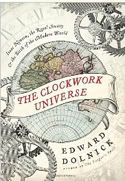 1. A Clockwork Universe: Isaac Newton, the Royal Society, and the Birth of the Modern World
1. A Clockwork Universe: Isaac Newton, the Royal Society, and the Birth of the Modern World by Edward Dolnick
by Edward Dolnick
Dolnick has written a compelling, extremely readable history of the birth of modern science, including calculus, which explains the world around us. Fascinating and recommended for lovers of math, science or history.
2. In the Queens’ Parlor by Ellery Queen
by Ellery Queen
This is a compilation of behind the scenes observations on authors, publishing, plotting, naming and other mysteries of mysteries by Manfred Lee and Frederic Dannay who wrote scores of mystery novels as the fictional Ellery Queen. First published in 1942 and updated several times, the last in 1957. It’s out of print, but I was lucky enough to get a copy on inter-library loan. I loved it and recommend it for all EQ lovers, and those who enjoy other vintage mysteries.
3. Building the Pauson House: the letters of Frank Lloyd Wright & Rose Pauson
Told in the form of more than fifty previously unpublished letters written between 1938 and 1943–alongside rare site photographs and Wright’s architectural drawings–Building the Pauson House: The Letters of Frank Lloyd Wright and Rose Pauson chronicles the design and construction of that house, as well as the architect-client relationship. Beautifully laid out, it is a feast for the eyes and will be pored over for much longer than the evening it takes to read. And who should read this? For sure, architects and their apprentices. But it also contains valuable lessons for anyone having a home built. Students of design or architecture, lovers of Wright’s work or the Arts and Crafts movement in general, those interested in history, the desert environment, or the psychology of letters: any of these would be delighted with this volume.



by Laura Ingalls Wilder, the last in the Little House series
of books.
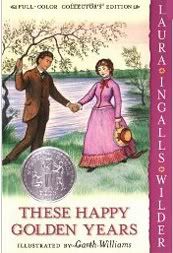 I was immediately charmed by and lost in this story of a young girl in the American West nearly one hundred years earlier than I was living. Perhaps I was drawn to that little girl because she thought “If I could live this way always, I’d never want anything more”. Maybe I just liked the glimpse into homemaking in the past. Whatever, for a kid who hated history in high school, I was captivated by Laura’s life and quickly sought out the rest of series.
I was immediately charmed by and lost in this story of a young girl in the American West nearly one hundred years earlier than I was living. Perhaps I was drawn to that little girl because she thought “If I could live this way always, I’d never want anything more”. Maybe I just liked the glimpse into homemaking in the past. Whatever, for a kid who hated history in high school, I was captivated by Laura’s life and quickly sought out the rest of series. 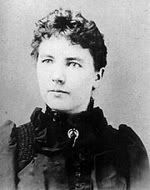


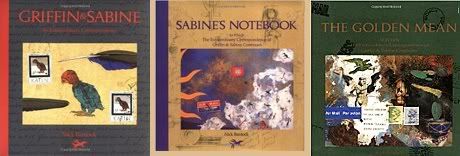
 Dog In Boots is a lovable brown and white terrier-type pooch who reads a “brilliant book” about a cat with a truly magnificent pair of boots and thinks he would like the same. Happily (or not), the local shop owner has just such a thing – but our dog finds that perhaps they are not such a good idea after all. After a number of attempts at finding the ideal footwear, Dog finds the perfect paws for his activities.
Dog In Boots is a lovable brown and white terrier-type pooch who reads a “brilliant book” about a cat with a truly magnificent pair of boots and thinks he would like the same. Happily (or not), the local shop owner has just such a thing – but our dog finds that perhaps they are not such a good idea after all. After a number of attempts at finding the ideal footwear, Dog finds the perfect paws for his activities. Just what you would expect from Herriot: a lovely, rather meandering tale of a stray dog in the market. The story was perhaps a little too meandering for a three-and-a-half year old, but Grams sure liked it.
Just what you would expect from Herriot: a lovely, rather meandering tale of a stray dog in the market. The story was perhaps a little too meandering for a three-and-a-half year old, but Grams sure liked it.  Giraffe and Bird act like they can’t stand each other – and that’s what they say. But deep down, they need and want each other. Some of the situations they get each other into are amusing.
Giraffe and Bird act like they can’t stand each other – and that’s what they say. But deep down, they need and want each other. Some of the situations they get each other into are amusing.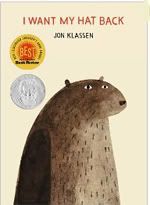 Bear has lost his hat and is making his way through the forest asking each of the animals in turn if they have seen it.
Bear has lost his hat and is making his way through the forest asking each of the animals in turn if they have seen it. 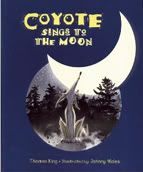 Every evening, Old Woman and the animals gather at the pond to serenade the moon. They won’t let Coyote join them because they think he has a terrible singing voice. His feelings hurt, Coyote insults the moon, who hears him and decides to go on a vacation.
Every evening, Old Woman and the animals gather at the pond to serenade the moon. They won’t let Coyote join them because they think he has a terrible singing voice. His feelings hurt, Coyote insults the moon, who hears him and decides to go on a vacation.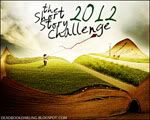 FAILED TO COMPLETE
FAILED TO COMPLETE

 7.
7.  13.
13.  This is the second book in the delightful Chet & Bernie series. Chet is the canine half of the PI team and the story is told through his eyes. This mystery revolves around a missing show dog named Princess and her owner, who we learn early on, has been murdered. But Chet can’t convey that to Bernie and so Bernie must discover it for himself. Chet’s advanced doggie senses of hearing and smell bring interesting angles to the story.
This is the second book in the delightful Chet & Bernie series. Chet is the canine half of the PI team and the story is told through his eyes. This mystery revolves around a missing show dog named Princess and her owner, who we learn early on, has been murdered. But Chet can’t convey that to Bernie and so Bernie must discover it for himself. Chet’s advanced doggie senses of hearing and smell bring interesting angles to the story.  1.
1. 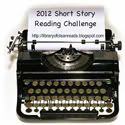 COMPLETED
COMPLETED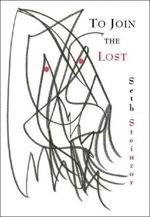 For the greater part of his life, Seth Steinzor has been enraptured by Dante Alighieri’s Divine Comedy. He loved, among other things, the “vivid sensory images, powerful spirituality (and) wicked humor”. To communicate the powerful effect Dante had on him, Steinzor “undertook to rewrite the Comedy as if it had happened to [him]; not as a translation or as an adaptation, but as [his] own experience.” Thus was born
For the greater part of his life, Seth Steinzor has been enraptured by Dante Alighieri’s Divine Comedy. He loved, among other things, the “vivid sensory images, powerful spirituality (and) wicked humor”. To communicate the powerful effect Dante had on him, Steinzor “undertook to rewrite the Comedy as if it had happened to [him]; not as a translation or as an adaptation, but as [his] own experience.” Thus was born 


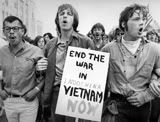 Richard Barager’s debut novel is set against the back drop of 1960s America, the Vietnam War, and the ever increasingly violent anti-war protests of the time. It is the story of David and Jackie, young people on opposite sides of those divisive issues, but who have a passion for each other that connects them through it all. David’s story unfolds in Vietnam, Jackie’s at the University of Minnesota and in California. After David’s tour of duty, he returns to the States and takes up his relationship with Jackie who is now involved with Kyle Levy, a militant anti-establishment activist.
Richard Barager’s debut novel is set against the back drop of 1960s America, the Vietnam War, and the ever increasingly violent anti-war protests of the time. It is the story of David and Jackie, young people on opposite sides of those divisive issues, but who have a passion for each other that connects them through it all. David’s story unfolds in Vietnam, Jackie’s at the University of Minnesota and in California. After David’s tour of duty, he returns to the States and takes up his relationship with Jackie who is now involved with Kyle Levy, a militant anti-establishment activist.  embraced the ‘summer of love’ and peace movement ideology as most of my friends did. Being Canadians removed us from the immediate political arena around Vietnam, allowing us to see the issue from only one side. It was the era of not only “Mary Quant miniskirts, white go-go boots, flash cubes, color broadcasting on all three networks, and static-free radio”; to us the times were world-changing and thus clothed in importance and valour. So I was astounded to read the narrator’s opinion: “No matter how absurd the decade appeared in the century’s rear-view mirror, it had at least aspired to be relevant.” Absurd?! We were absurd? No way!
embraced the ‘summer of love’ and peace movement ideology as most of my friends did. Being Canadians removed us from the immediate political arena around Vietnam, allowing us to see the issue from only one side. It was the era of not only “Mary Quant miniskirts, white go-go boots, flash cubes, color broadcasting on all three networks, and static-free radio”; to us the times were world-changing and thus clothed in importance and valour. So I was astounded to read the narrator’s opinion: “No matter how absurd the decade appeared in the century’s rear-view mirror, it had at least aspired to be relevant.” Absurd?! We were absurd? No way! In an effort to expand my reading horizons, I decided to take up the gauntlet laid down by Serena at
In an effort to expand my reading horizons, I decided to take up the gauntlet laid down by Serena at 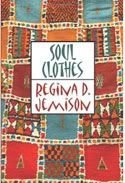 Intrigued by the blurb on LibraryThing Early Reviewers which told me to “imagine a John Coltrane solo, with words instead of tenor sax”, I requested (and won)
Intrigued by the blurb on LibraryThing Early Reviewers which told me to “imagine a John Coltrane solo, with words instead of tenor sax”, I requested (and won) 
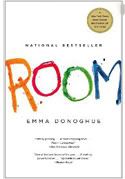
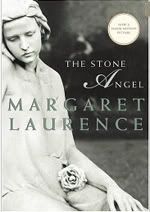


 The author of
The author of  Kravitz recognized how much of a struggle it would be to keep up the rekindled relationships on an on-gong basis once he ‘re-entered his life’. He determined to make time, and so should we all. I would be interested in a follow-up from Kravitz: how has he handled that intention?
Kravitz recognized how much of a struggle it would be to keep up the rekindled relationships on an on-gong basis once he ‘re-entered his life’. He determined to make time, and so should we all. I would be interested in a follow-up from Kravitz: how has he handled that intention?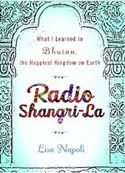 In 2007, L.A. based radio writer Napoli happened across an opportunity to spend several months in Bhutan, a tiny landlocked kingdom in the Himalayas. Bhutan has the distinction of measuring its success in Gross National Happiness rather than GNP, the only nation on earth to do so.
In 2007, L.A. based radio writer Napoli happened across an opportunity to spend several months in Bhutan, a tiny landlocked kingdom in the Himalayas. Bhutan has the distinction of measuring its success in Gross National Happiness rather than GNP, the only nation on earth to do so.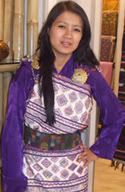

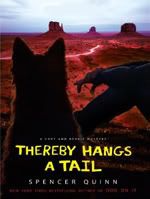
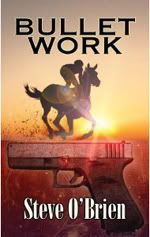 That’s the premise of
That’s the premise of